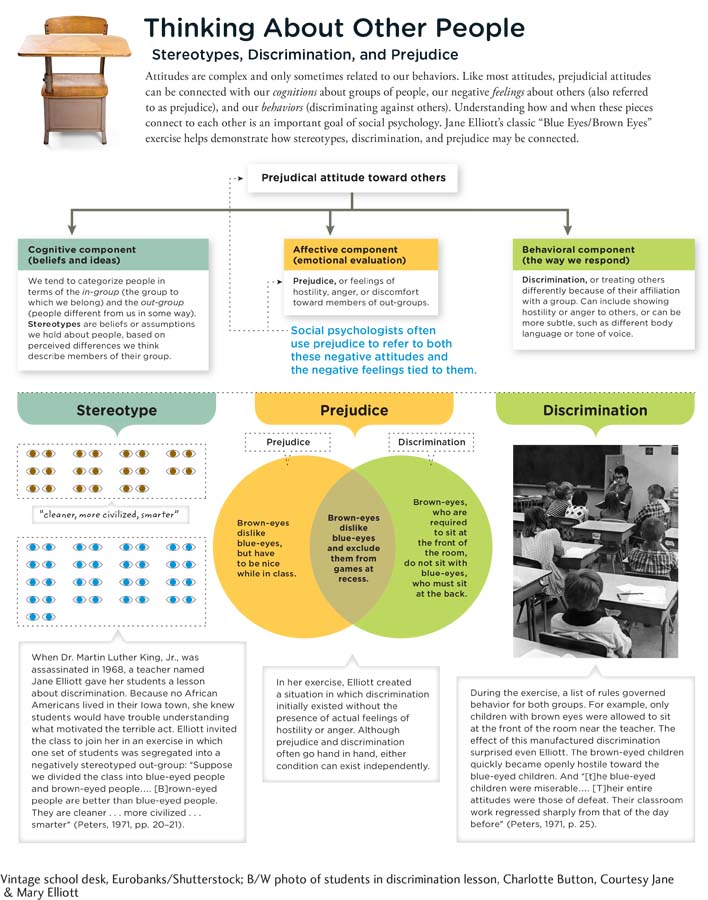Chapter 1. Chapter
Infographic
Scientific American: Psychology
Infographic Activity 14.3: Thinking About Other People
Thinking About Other People

Attitudes are complex and only sometimes related to our behaviors. Like most attitudes, prejudicial attitudes can be connected with our cognitions about groups of people, our negative feelings about others (also referred to as prejudice), and our behaviors (discriminating against others). Understanding how and when these pieces connect to each other is an important goal of social psychology. Jane Elliott’s classic “Blue Eyes/Brown Eyes” exercise helps demonstrate how stereotypes, discrimination, and prejudice may be connected.
Click the image to enlarge.
Click "Next" to continue.
1.1 Quiz
1. What was the historical event that led Jane Elliott to conduct her famous “Blue Eyes/Brown Eyes” project?
| A. |
| B. |
| C. |
| D. |
2. Prejudice is to the ________ component of an attitude as discrimination is to the ________ component of that same attitude.
| A. |
| B. |
| C. |
| D. |
3. Thagi has been wanting to take a course in college-level calculus for some time, and she finally registers for that class. She walks in on the first day, and sees an Asian woman at the front of the class. On the board is written, “Math 341 – Calculus I – Professor Xiao.” Thagi thinks to herself, “this should be a really good class, because Asian people are really smart when it comes to math!” Thagi’s belief represents a(n) ________.
| A. |
| B. |
| C. |
| D. |
4. Louie has spent a few months working at a restaurant in the Los Angeles International Airport. During that time, he has developed the belief that people from certain cultures are rude and unpleasant. When guests from those cultures come to the restaurant, he intentionally provides them with slower and less friendly service. Louie’s differential treatment of these customers is an example of:
| A. |
| B. |
| C. |
| D. |
5. Which of the following would be the best example of prejudice?
| A. |
| B. |
| C. |
| D. |